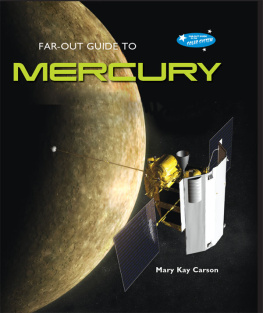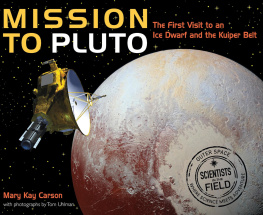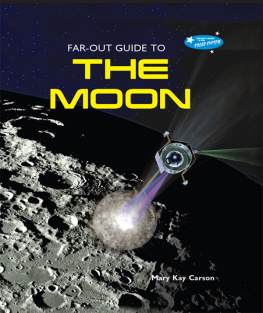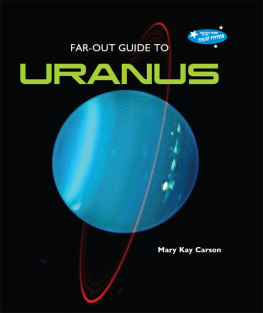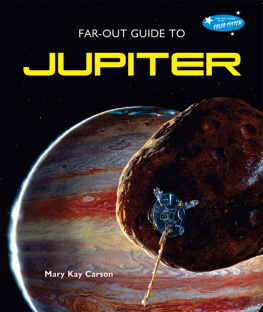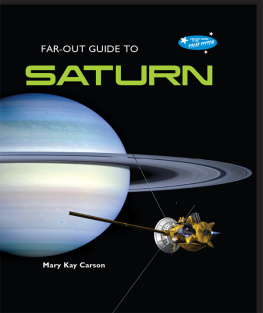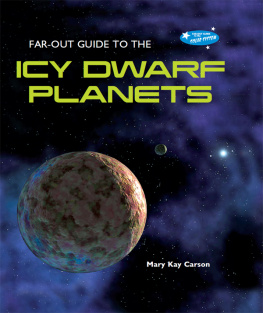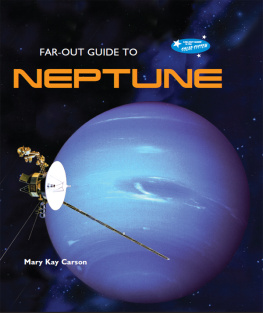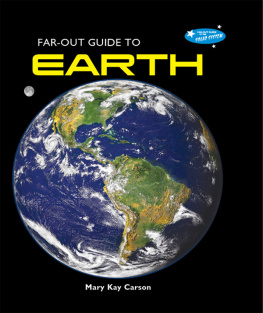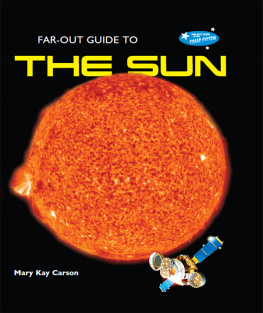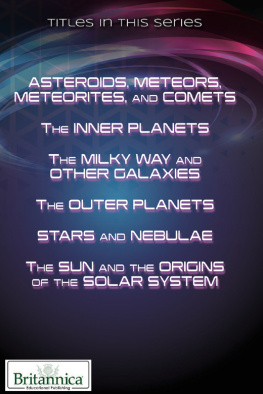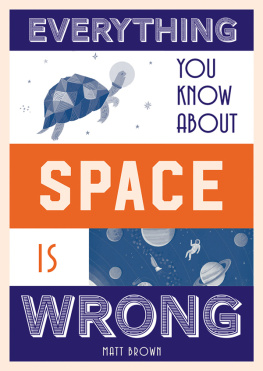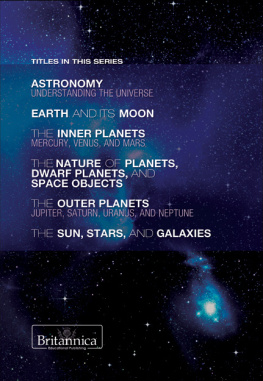
LITTLE AND QUICK
CRATERED MERCURY IS THE SMALLEST AND FASTEST planet in the solar system. Temperatures there vary more than on any other planet. How do we know this?
Spacecraft from Earth have visited Mercury and taught us a lot about this tiny, rocky planet. Learn about the amazing missions, the dedicated scientists who plan them, and lots of far-out facts about the closest planet to the Sun.
The Far-Out Guide to the Solar System series provides valuable information about the solar system, its planets, and mankind's quest in exploring them. This series is an excellent resource for young scientists and amateur astronomers.
Bahram Mobasher, PhD, Series Science Consultant
Professor of Physics and Observational Astronomy, University of California, Riverside
About the Author
Award-winning author MARY KAY CARSON has written many nonfiction books for young people and their teachers. In 2009, she received the American Institute of Aeronautics and Astronautics Children's Literature Award.
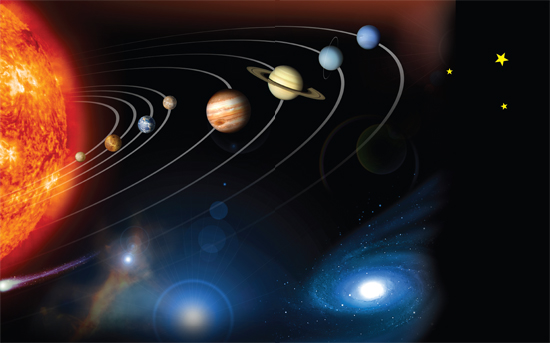
Image Credit: NASA/JPL
Mercury is the planet nearest the Sun. (Note that the planets distances are not shown to scale.) Mars, Earth, Venus, and Mercury are the solar systems land-covered, or terrestrial, planets. Mercury is the least well-known of these four rocky worlds.
Sunrise on Mercury can be quite a show. The Sun comes over the horizon and grows larger as it rises. Once high in the black sky, the Sun pauses and then moves backward along its path a bit. The odd sunrise is a long show, too. Nearly six months of Earth time pass between one sunrise and the next on Mercury! You will learn lots more far-out facts about Mercury in this book. Just keep reading!
Mercury is a planet of extremes. It is the smallest in the solar system. Mercury is the fastest planet, too. It travels through space at the highest speed. Mercury is also the planet nearest the Sun. Temperatures there get extremely hot, but also extremely cold. Its surface is one of the oldest in the solar system. Mercury is the planet with the least atmosphere. It is practically airless! Mercury is also one of the least-explored planets. Dozens of spacecraft have gone to both Venus and Mars. But only two robotic spacecraft have ever visited Mercury. Why do you think this is so?
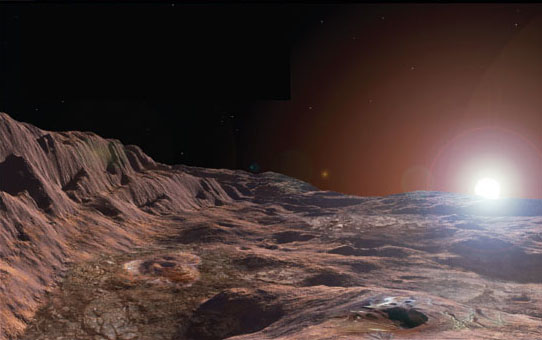
Image Credit: NASA/Michael Carroll/Alien Volcanoes by Lopes and Carroll, The Johns Hopkins University Press, 2008.
No person or spacecraft has ever landed on Mercury. This illustration shows what Mercurys surface might be like. The Sun looks nearly three times as big from Mercury as it does from Earth.
Mercury is dangerously close to the Sun. The Suns powerful heat and rays damage most spacecraft. So little exploration means Mercury still has many mysteries. Scientists have many questions about the planet: Why is Mercury so dense? What lies at its center? Did volcanoes shape the planet? One robotic spacecraft is braving the heat to find some answers. It is sending back the first views of all of Mercury. The space probe will also search for something almost unbelievable. It will look for ice on the planet closest to the Sun.
FAR-OUT FACT
Mercury speeds around the Sun at 47,873 meters (157,062 feet) per second. It only takes 88 Earth days for Mercury to orbit the Sun. Four years would pass on Mercury between your Earth birthdays. While Mercurys year is short, its day drags on and on. It takes Mercury more than 1,407 hours to spin around once, which is one day. That means that one Mercury day lasts nearly two months of Earth time!
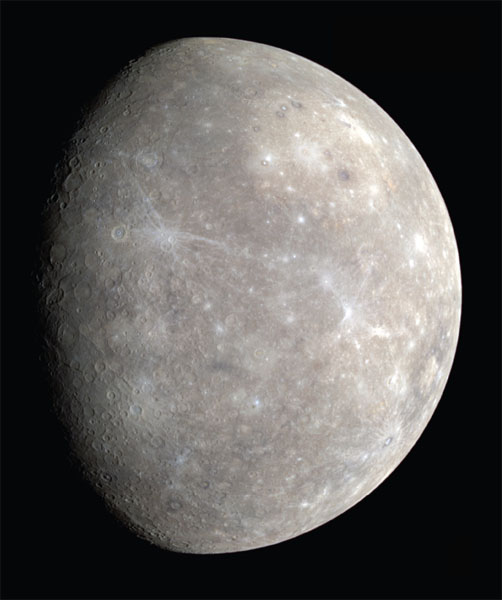
Image Credit: NASA/Johns Hopkins University Applied Physics Laboratory/Carnegie Institution of Washington
Mercury is an airless, lifeless world covered in craters.
Seeing Mercury from Earth can be tough. It only appears in the night sky right before sunrise or just after sunset. Mercurys closeness to the Sun makes it hard to see with telescopes, too. Having to look toward the Sun when observing Mercury is like trying to see a flickering candle next to a roaring campfire.
Radar gets around this problem. A radar telescope can send radar beams toward Mercury at any time of day. Radar is not blinded by sunlight. Radar has helped scientists discover many things about Mercury. They were finally able to measure how long a day lasts on Mercury using radar in 1965. Radar telescopes helped make another surprising discovery about Mercury in 1991.
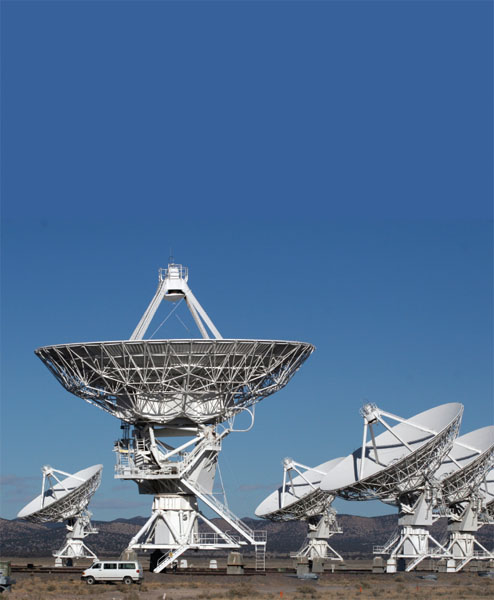
Image Credit: Tom Uhlman Photography
These antennae are part of the Very Large Array (VLA). The VLA is an observatory in New Mexico. It studies planets and stars with radar and radio signals. It was part of the radar system that studied Mercurys ice in 1991.
FAR-OUT FACT
A radar telescope is not a tube you look through, like a backyard telescope. Instead, it looks like a big satellite dish. Radar telescopes send out pulses of radio waves toward a planet or other object in space. The waves hit the object and their echoes bounce back to Earth. The time between pulses and bouncesand how the radio waves changeis used to make maps and pictures of planets, asteroids, moons, and even the rings of Saturn.
Scientist Duane Muhleman uses radar telescopes to study planets. He has studied Mars, Venus, and Saturn. In 1991, Muhleman was bouncing radar beams off Mercury. He was making a map of its surface. At the time, more than half of Mercury had never been seen before.
Muhlemans team sent powerful radar beams toward the planet. Radar telescopes received the echoes that bounced off the planet. A computer turned the radar information into the map . One part of the radar map shocked scientists. There was a bright circle at the top of Mercury. The radar beam had hit and bounced off something very shiny at Mercurys north pole. That shiny something was too bright to be rock. The only other places weve seen [the radar] do this are at the ice caps on Mars, Muhleman told reporters.
Muhleman and his team had a hard time believing what they were seeing at first. The general reaction was... that cant be ice, can it? Muhleman said. But once you think about it... it makes perfect sense. How can hot Mercury have ice? The planet is close to the Sun. But some parts of Mercury are always dark and coldcold enough to keep water frozen solid.
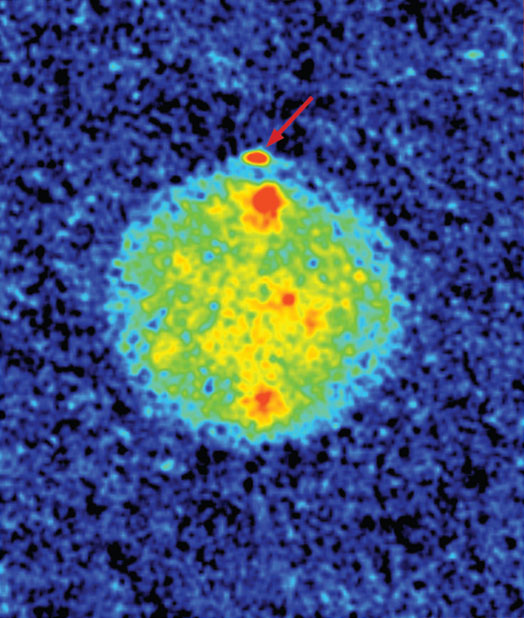
Image Credit: National Radio Astronomy Observatory/Associated Universities, Inc./National Science Foundation
This is the radar map of Mercury that Duane Muhleman and his team created. The red areas on the map are where the most echoes bounced back. The arrow points to the small red circle on top that is the shiny something thought to be ice.
Mercury might remind you of Earths Moon. They are similar in size. Both are lifeless, silent, gray worlds. Each is covered in craters and dusty hills. Mercury and the Moon have black star-filled skies, even during the day. These two worlds are similar for a reason. Neither has an atmosphere. No blanket of air surrounds the Moon or Mercury. Sounds cannot travel without air. Skies cannot be blue, red, or any other color without an atmosphere to scatter sunlight.
Next page
